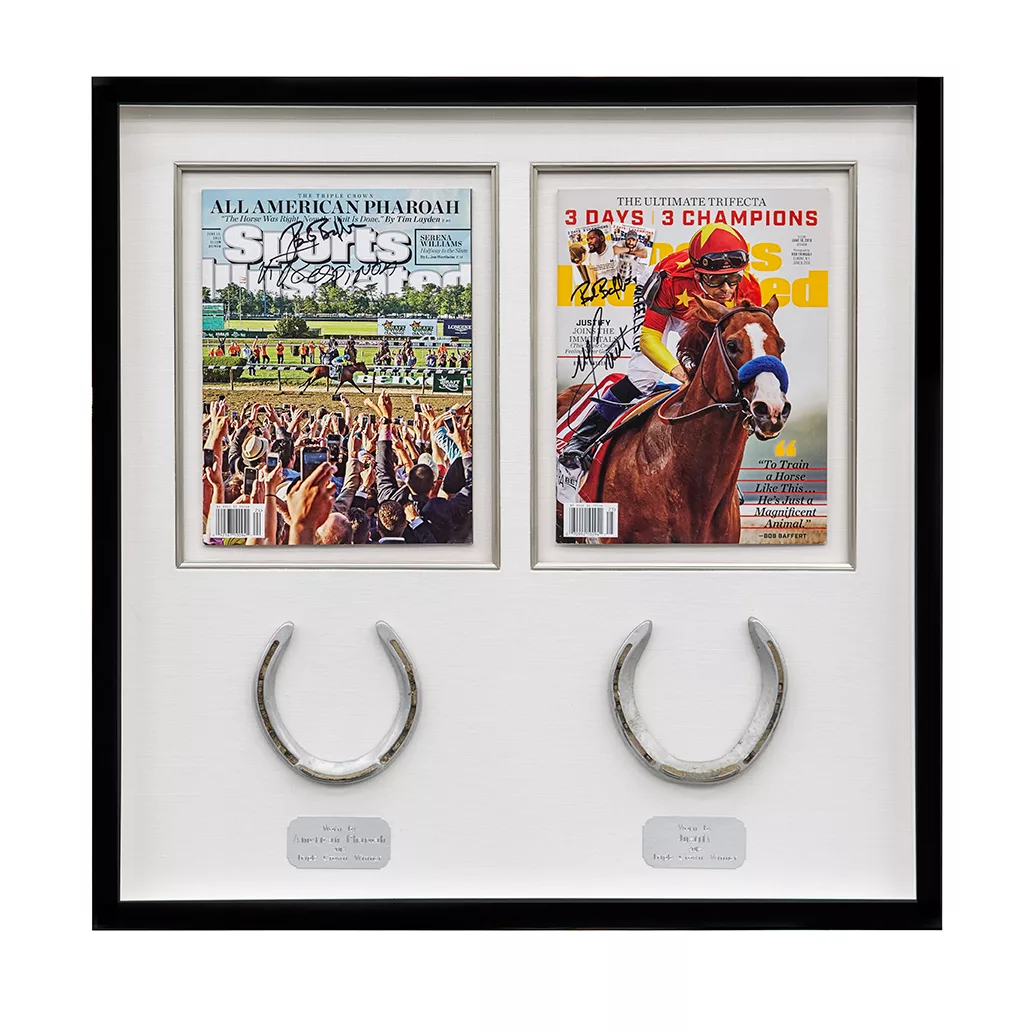Owning a piece of Thoroughbred racing history has more benefits than just having the rights to authentic memorabilia. Triple Crown winners American Pharoah and Justify both had mementos included in the sixth annual Sporting Art Auction held on Nov. 18, 2018, at Keeneland Auction House. Proceeds benefited Ann Hanley Parkinson’s Research Fund.
Of the memorabilia, there was a halter worn by 2018 Triple Crown winner Justify, which went for $31,050, according to Keeneland Auction House. A joint collectible piece featuring Justify and the 2015 Triple Crown winner American Pharoah include a horseshoe from each, as well as two editions of Sports Illustratedfeaturing each horse, signed by Hall Of Fame trainer Bob Baffert and the Triple Crown-winning jockeys Mike Smith and Victor Espinoza. This item went for $36,800. Both items were donated by Baffert.
“The Sporting Art Auction provides another meaningful way for Keeneland to support worthy causes in the community and horse industry,” says Keeneland President and Chief Executive Officer (CEO) Bill Thomason. “We thank Bob for this generous donation of Triple Crown memorabilia, which is certain to create excitement among racing fans and support Ann and her fight against Parkinson’s disease.”
The Sporting Art Auction donated 100% of the $67,850 worth of Triple Crown memorabilia directly to Ann Hanley Parkinson’s Research Fund. When Ann Hanley was diagnosed with Parkinson’s Disease at 49, she was determined to help others suffering from the ailment. Parkinson’s affects the nervous system by degrading neurons that produce dopamine, which leads to the tremors often associated with the disease. The central nervous system (CNS), comprised of the brain and spinal cord, does not heal as well after injury. However, through Hanley’s research, it has been discovered that the peripheral nervous system (PNS) is capable of repairing itself.
Hanley found out that neural stimulation might promote healing in the PNS. A nerve graft is implanted into the brain through a surgical procedure. The graft cells then release chemicals in hopes to rejuvenate the dopamine-producing neurons and to encourage them to start producing dopamine again.
Most of the funding for her research has come from the Thoroughbred community.
"Because this procedure taps into the body’s own repair mechanism without the use of drugs, funding is not readily available," according to Keeneland.
Baffert's donation of the Triple Crown winner memorabilia will hopefully set research off a neck ahead.







